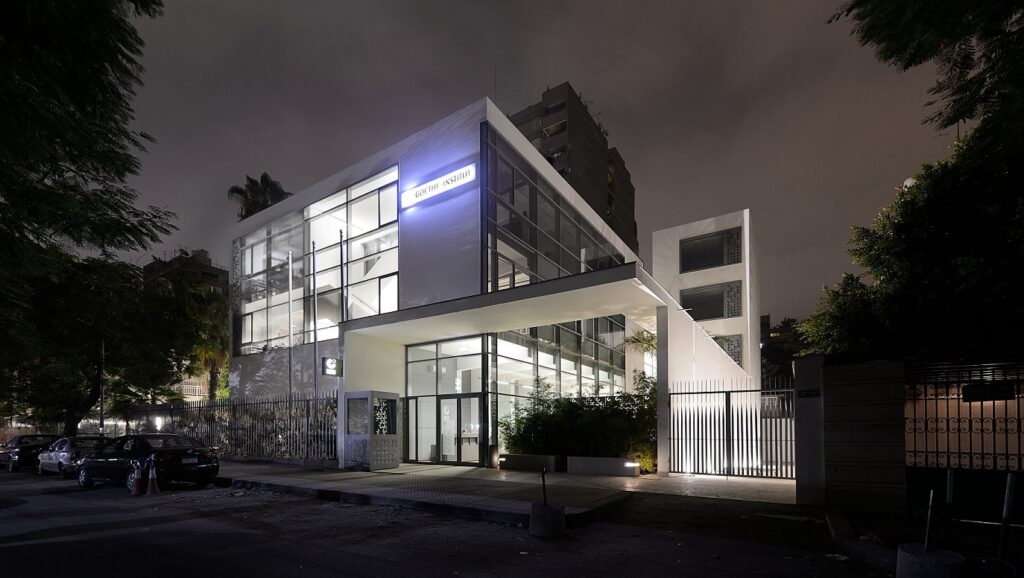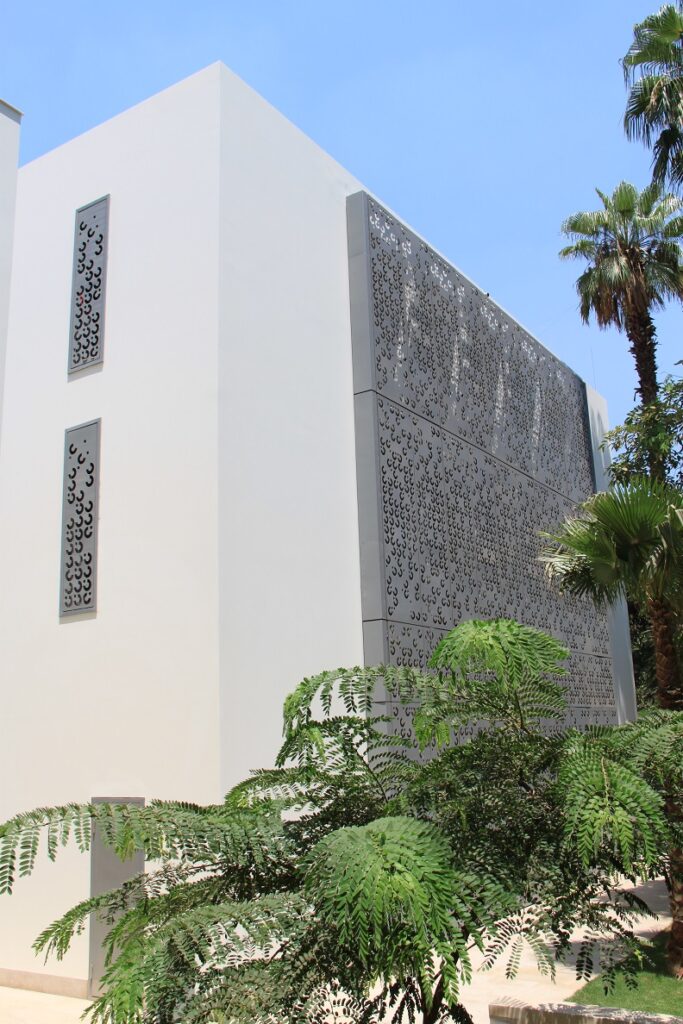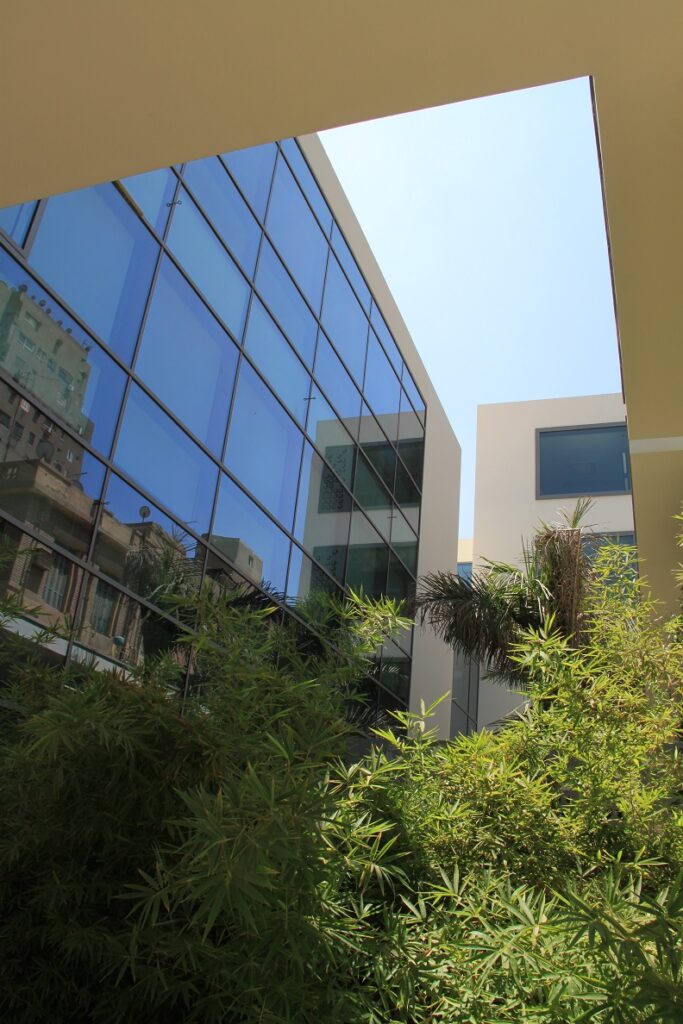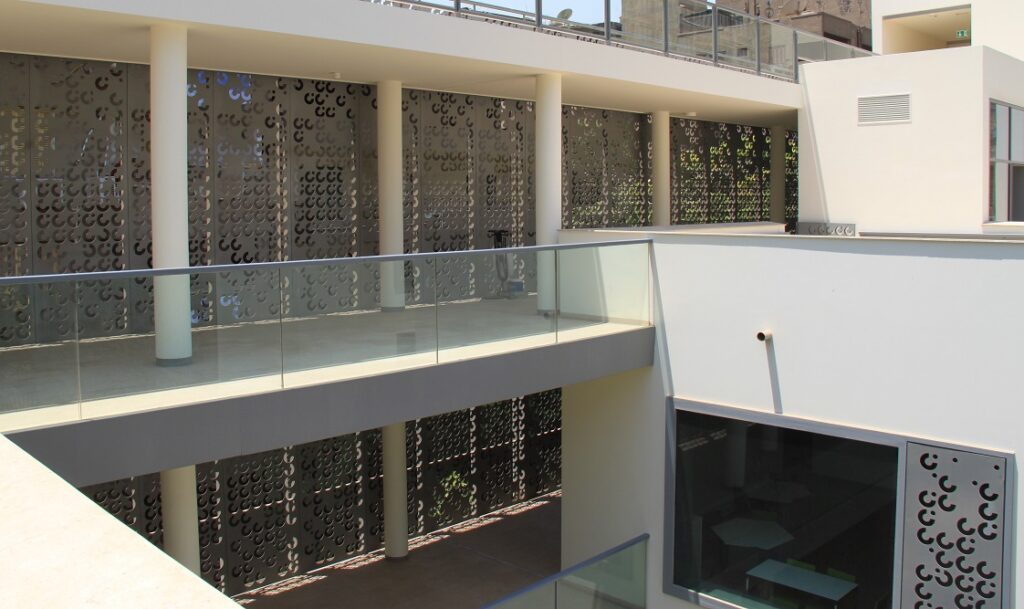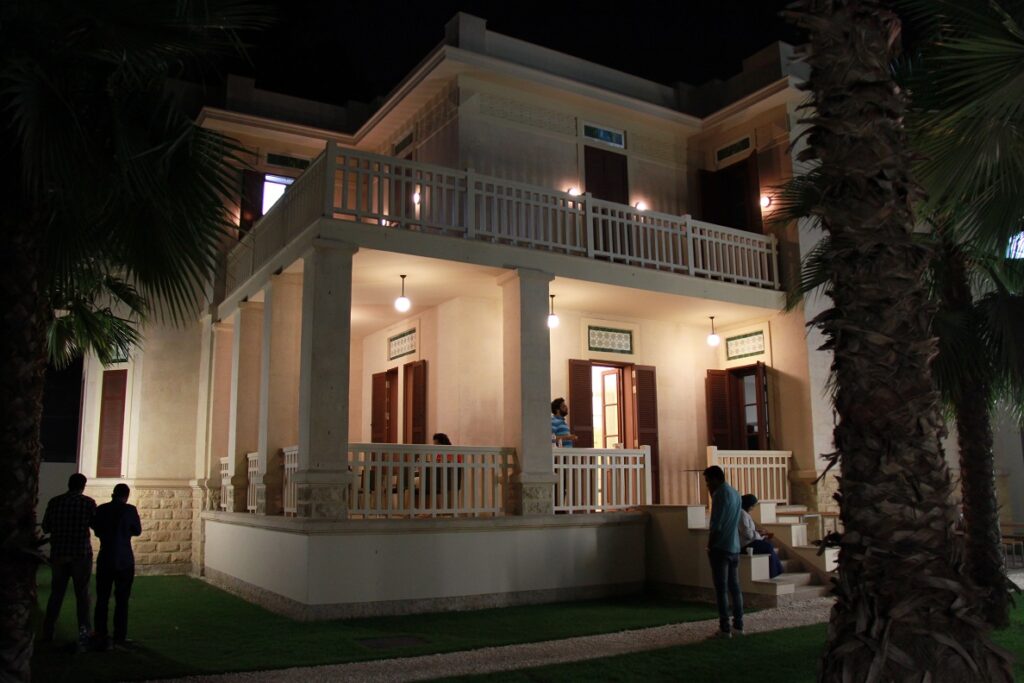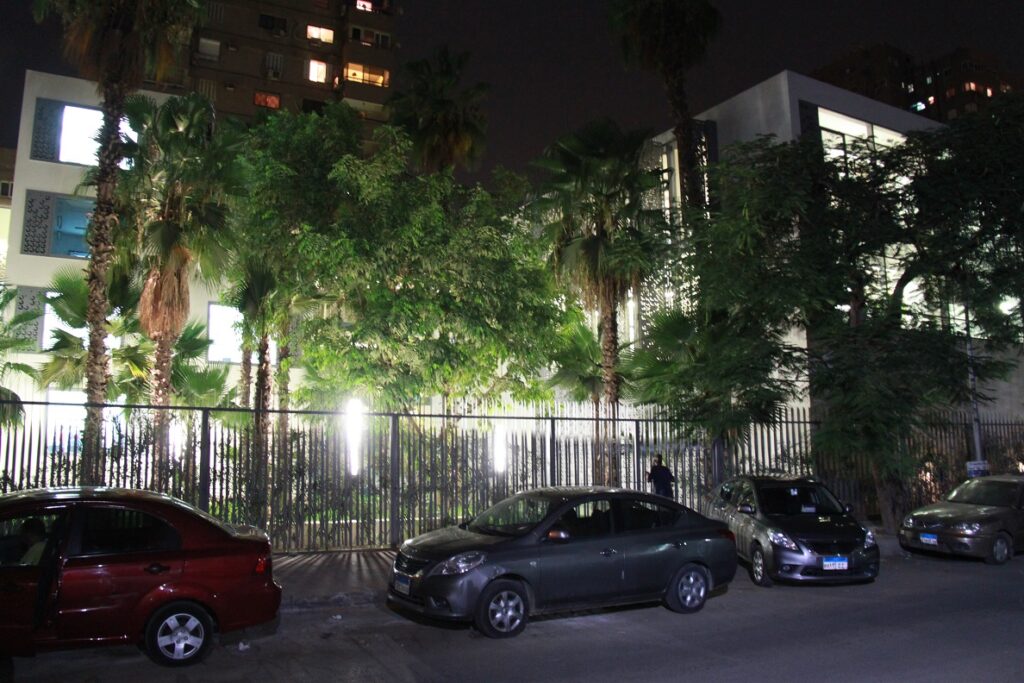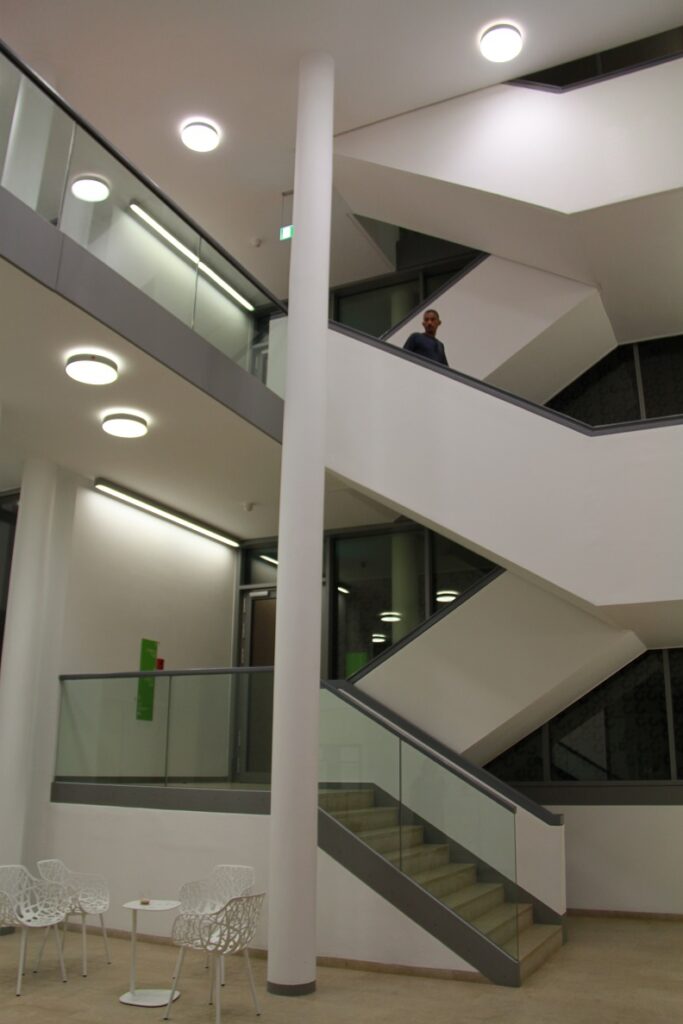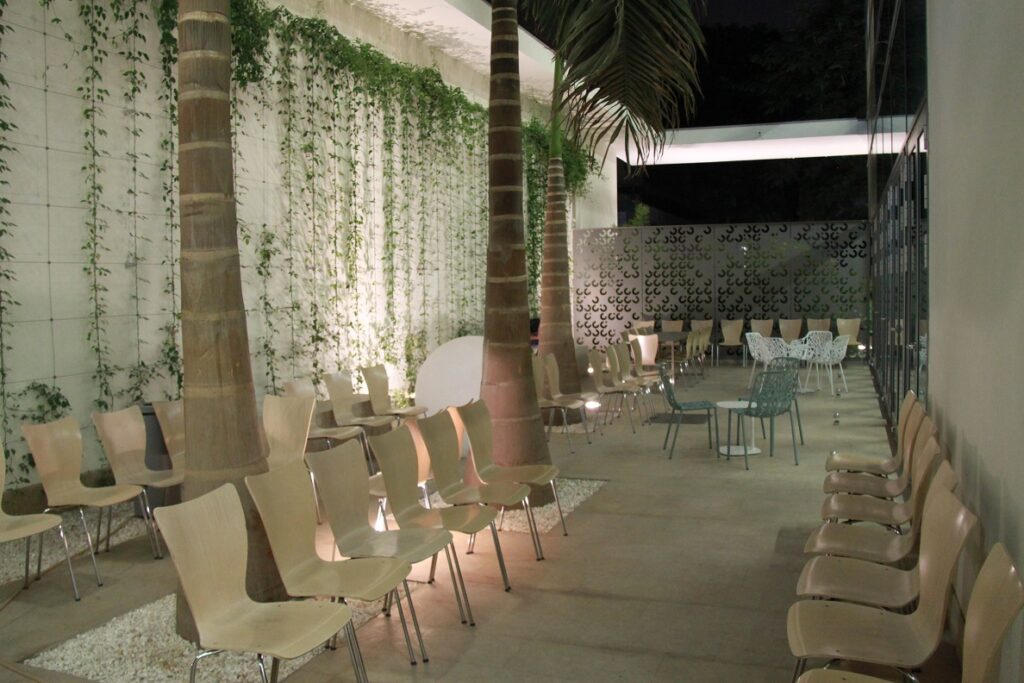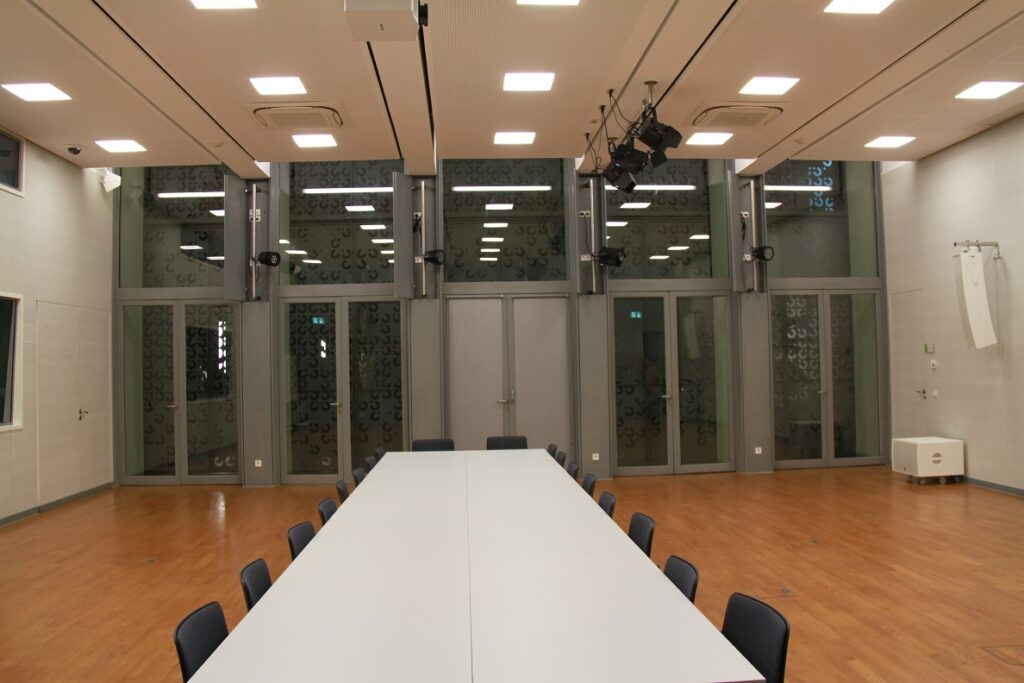Conversion and new construction of the Goethe Institute in Cairo
The conversion of an old villa and a new building for the Goethe Institute in Cairo led to an ensemble that combines tradition with modernism in a remarkably reserved way. During the process, there were many obstacles to overcome due to the political upheaval in the host country
The end of a three-way split
Hagen Thiele
As a result of German reunification, the Federal Republic inherited many buildings abroad that had previously belonged to the GDR, especially embassy buildings. In this way, it received two developed properties on the west bank of the Nile, in a superior location of the Egyptian capital Cairo, in the district of Dokki, which is characterised by free-standing villas with large open spaces. The quarter’s formerly closed appearance has been broken up in the meantime through a number of high-rise buildings.
The property at Sharia Hussein Wassef No. 13 was purchased by the GDR in 1966. The corner plot situated on a green square, with a size of around 1,500 square metres, is developed with a three-storey urban villa and a single-storey auxiliary building. Constructed around 1930 as a residential building and office for an Egyptian merchant family, it was initially rented by the State of Tunisia in 1956, which had only just gained independence and opened an embassy there. The GDR subsequently used the building as an embassy chancellery. In 1968 the GDR additionally purchased a property two houses down from there, with the address Sharia Hussein Wassef No. 17, which was a 2,600 square metre area with a two-storey earthquake-damaged urban villa and several auxiliary buildings. The original intention to build a new chancellery there was never implemented. The building and the open spaces instead served as storage space and a car park. Independently of that, the Goethe Institute in Cairo resided on the Nile’s east bank since the 1960s, in the late 19th century town centre near Tahrir Square, occupying a villa with an auxiliary building on a federally owned property in Sharia El-Bustan No. 5.
After reunification, the language department moved to the former GDR chancellery in 1991 once it had been renovated. The institute management, administration and library remained in the old building. This very impractical three-way split across two districts had to be solved in the medium term, above all for organisational and economic reasons. Two properties, one long-term use From 2002, occupation concepts were developed and assessed based on surveys and evaluations by the Arbeitsgemeinschaft KRV – Dr. Krekeler Architekten und Generalplaner with Ruiken & Vetter Architekten – taking all three properties into account. Prior to that, several unsuccessful attempts had been made to purchase the property between Nos. 13 and 17 to create a unified plot. Following an occupancy study in 2004 and based on the 2005 building decision-making document, a basic concept crystallized with the joint approval of the users. It planned to accommodate the public area of the Goethe Institute, including the language teaching, library, programme work and events on the property at No. 17, while No. 13 was intended for the institute management and administration. The decision planned the sale of the building in Sharia El-Bustan No. 5 after the move.
Since there was additional space available in No. 13, the upper floor was earmarked for use by the German Academic Exchange Service (DAAD) to fulfil its spatial needs. The building measure was structured and prepared in separate stages for each property: initially involving the property on No. 17, before moving on to the corner property at No. 13. In late 2006, a limited open implementation competition was announced for auxiliary new buildings on the No. 17 property. The design by Worschech Architekten impressed the jury with its respectful handling of the existing villa and garden, as well as the overall design concept that would also include the corner villa in the long term. The new construction volume is divided between several individual buildings. The encounter centre and the language secretary’s office are situated in the entrance area. The twelve equally sized classrooms for language teaching are accommodated in the so-called tower buildings connected by pergolas. The two-storey library is situated above the large event hall with adjoining storage and changing rooms. The hall’s equipment included a control room, fixed interpreter’s cubicles and a projector with a high quality loudspeaker system, thereby fulfilling the high demands of cultural communication. The urban villa with its large rooftop terrace is mainly reserved for teaching personnel, with the exception of the cafeteria on the ground floor.
Since there was additional space available in No. 13, the upper floor was earmarked for use by the German Academic Exchange Service (DAAD) to fulfil its spatial needs. The building measure was structured and prepared in separate stages for each property: initially involving the property on No. 17, before moving on to the corner property at No. 13. In late 2006, a limited open implementation competition was announced for auxiliary new buildings on the No. 17 property. The design by Worschech Architekten impressed the jury with its respectful handling of the existing villa and garden, as well as the overall design concept that would also include the corner villa in the long term. The new construction volume is divided between several individual buildings. The encounter centre and the language secretary’s office are situated in the entrance area. The twelve equally sized classrooms for language teaching are accommodated in the so-called tower buildings connected by pergolas. The two-storey library is situated above the large event hall with adjoining storage and changing rooms. The hall’s equipment included a control room, fixed interpreter’s cubicles and a projector with a high quality loudspeaker system, thereby fulfilling the high demands of cultural communication. The urban villa with its large rooftop terrace is mainly reserved for teaching personnel, with the exception of the cafeteria on the ground floor.
The design of the interior space distinguished very deliberately between the new building and the villa, while taking into account the binding colour scheme of the Goethe Institute’s corporate design. In the new building, light-coloured, natural stone Sinai stone flooring dominates, together with white walls and ceilings. Windows, doors and baseboards add dark grey accentuation. Dark grey metal shading elements have been installed along the pergolas, with engraved Goethe Institute logos at irregular intervals. The decoration creates an attractive interplay of light and shadows depending on the time of day and the light conditions. The moveable sun protection is designed in a similar fashion in front of the windows. In the renovated villa, the atmosphere is defined by the parquet flooring and the rooms painted in different pastel tones, representing a respectful reference to the Goethe House in Weimar. The architects conceived their design, with most of its buildings along the property boundary, in a way that largely preserved the extensive garden including some old trees – a luxury in the midst of the major city. The open space with a wide range of indigenous greenery serves both to extend the event hall and as an exterior area for the cafeteria.
Building during the period of political upheaval A one-year process of local planning permission followed the BBR’s approval of the design plans in 2008. Once the construction plans were approved, an Egyptian general contractor was hired and work began in July 2012. Due to its by now multiple government changes, Egypt is currently experiencing a period of political instability. This has led to a state of general insecurity. Since the “Arab Spring”, the country has suffered from a deep economic crisis that has had effects on many areas of public life and therefore also on the construction process. Since hardly any building materials conforming to the required standards are produced in Egypt, they mainly had to be imported. Import delays became a constant problem on the construction site. Furthermore, deliveries to the building site were only possible to a limited degree at night due to the very unregulated traffic and local laws. They also required local authorisation, which was often refused, even at short notice. In retrospect, the planned construction period of 18 months proved to be too short for the building volume in view of the complicated situation in Egypt. Despite all the difficulties, the first stage of the building plans was presented to the Goethe Institute for use in June 2016.
During the building stage, the mainly Egyptian contractors and predomin – antly German team of the client learned a great deal together and about each other in overcoming the difficulties, whereby the cultural differences were never an obstacle. Especially in view of the current situation in Egypt, all those involved in the planning and building measures in Cairo deserve great respect.


